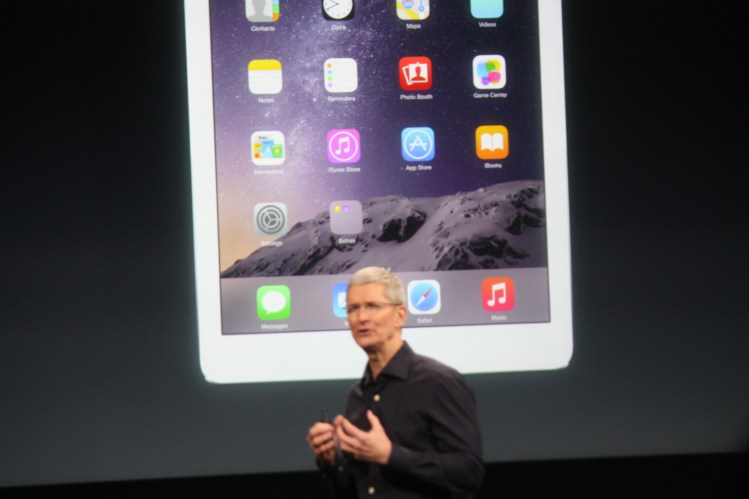If you’re smart, the prices listed above won’t be what you end up paying for one of the new iPads.
Those are the starting prices for each iPad model. And they only come with a measly 16 GB of storage.
Starting with the iPhone 6 and 6 Plus in September, Apple switched up its pricing and storage tiers for iOS devices. The entry-level price — $499 for the new iPad Air 2 in this case — still gets you 16 GB of storage like it always has. But for $100 more, you can quadruple your storage to 64 GB. Another $100 will get you a whopping 128 GB. The old pricing method would only get you 32 GB, 64 GB, and 128 GB in $100 increments.
But these days 16 GB of storage on any mobile device isn’t enough. We learned that the hard way when Apple released its new software for iPhones and iPads, iOS 8, a little over a month ago. Many with 16 GB devices couldn’t upgrade to iOS 8 because it required as much as 5 GB of free storage. With all the photos, videos, messages, music, and apps people store on their phones and tablets, it’s hard to imagine many with entry-level iPhones and iPads were able to download iOS 8. (Anecdotally, I’ve heard a ton of people complain about this, including my mom.) That also likely explains why iOS 8’s adoption rate is far behind what it was for iOS 7 last year.
(Yes, you can update iOS through iTunes by plugging your device into your computer no matter how much space you have. But iOS devices are no longer tethered to the computer like they used to be. You can do everything wirelessly, and it’s hard to imagine that many people were prompted to update to iOS 8 that way.)
Unfortunately, Apple’s new pricing scheme pretty much forces you to shell out an extra $100 for the 64 GB devices to ensure you have enough space to store all your stuff and be able to upgrade to new versions of iOS. And that’s a shame, since many of Apple’s competitors like Samsung, HTC, and Motorola now sell their entry-level devices with at least 32 GB of storage. Plus, many of those devices have the option to add even more storage with an SD card.
In that regard, Apple is behind the competition. For many, smartphones and tablets are their primary computing devices. That requires a lot of storage, which is relatively cheap to manufacture these days. Apple’s storage and pricing tiers appear designed to squeeze at least an extra $100 out of customers, when others have proved it doesn’t have to be that way. It wouldn’t hurt Apple’s bottom line much at all to make entry-level iPhones and iPads come with 32 GB of storage, especially since it’ll make it easier on users down the road when they’re ready to update iOS.
If you’re going to buy a new iPhone or iPad, get ready to pay at least $100 than the starting price Apple lists.
This story originally appeared on Business Insider. Copyright 2014


